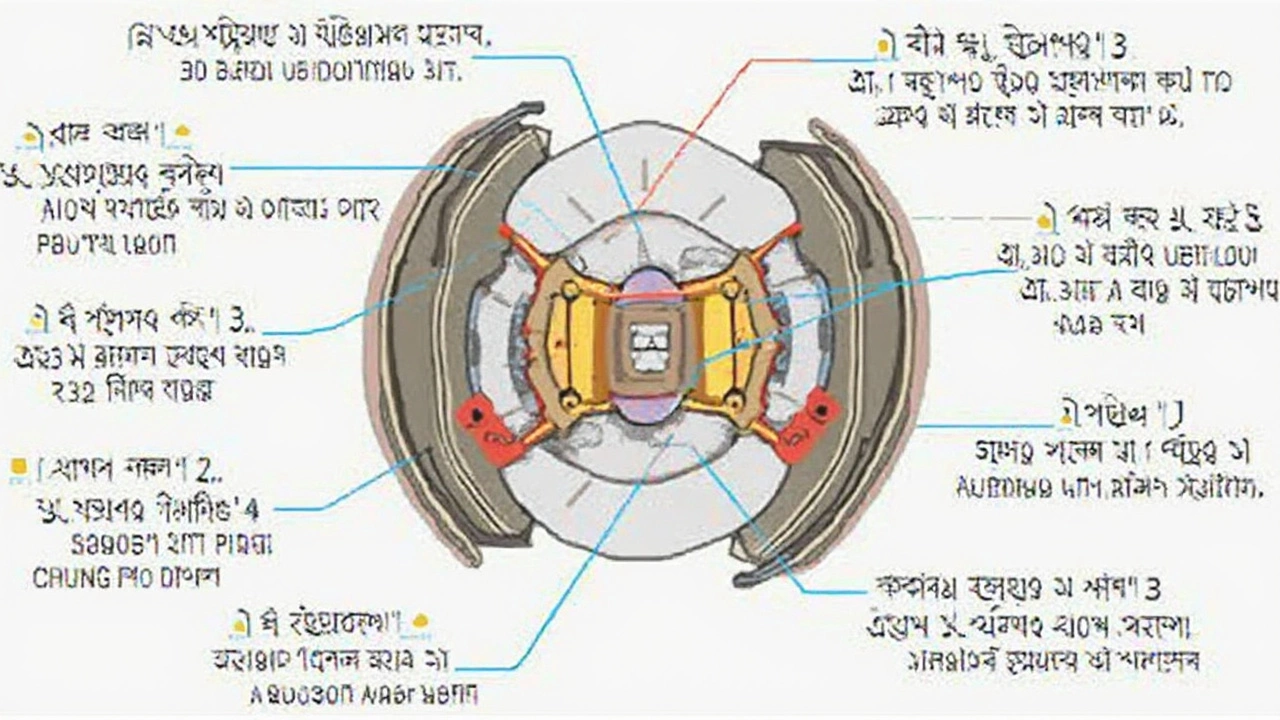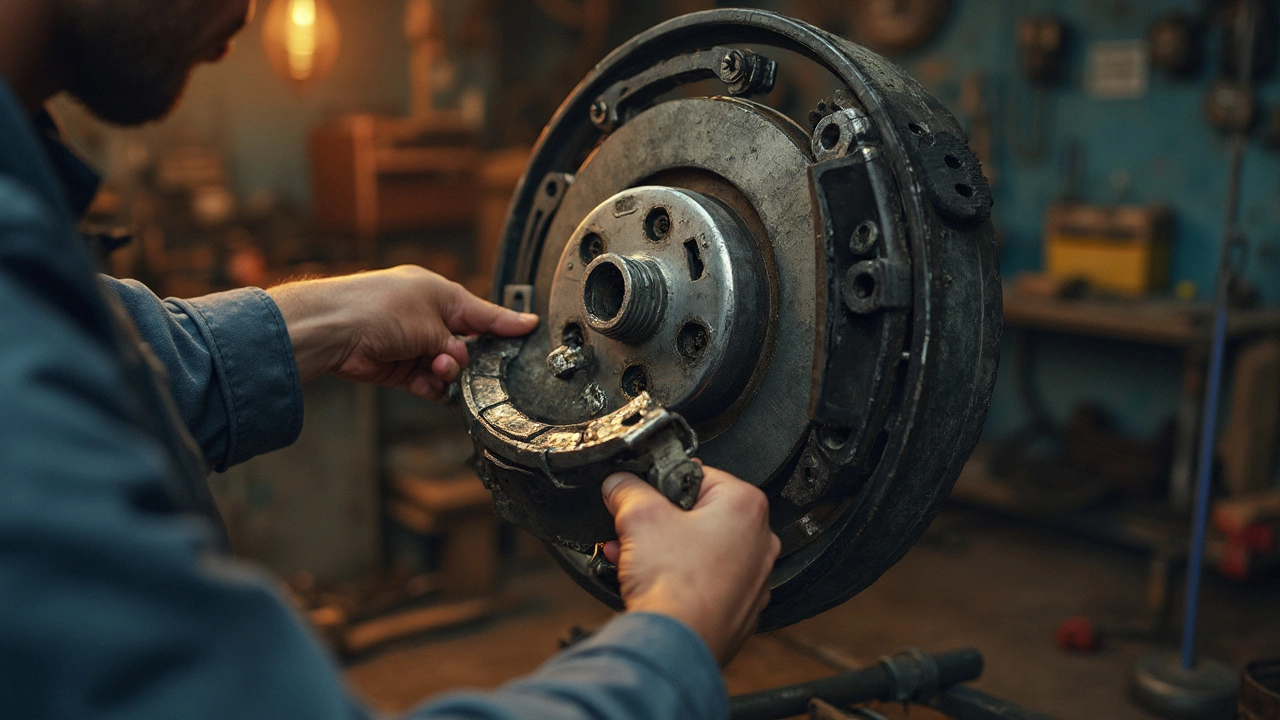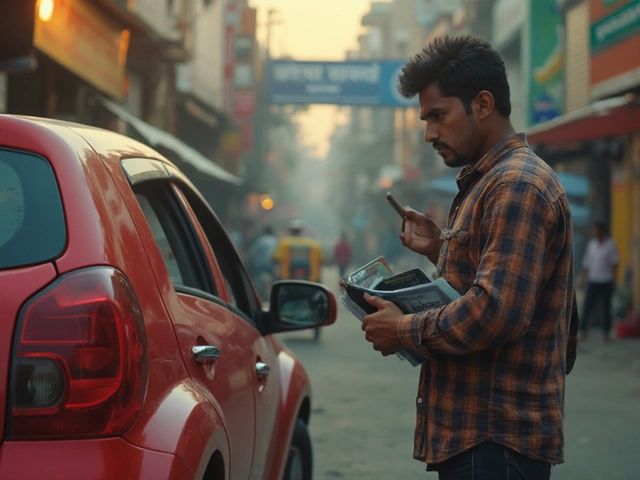So, you're thinking about changing your brake pads but wondering if you can skip replacing the discs? It's a common question. After all, brake pads are cheaper and easier to manage—who wouldn't want to save a buck or two, right? But there’s more to consider than just the price tag.
Let's start with understanding a bit about how pads and discs work together. Imagine them as a team. The pads press against the discs to make your car stop, and naturally, they both wear down over time. Now, while the pads might look worse for wear first, the discs don’t get a free pass forever.
There are scenarios where you can simply replace the pads. If the discs are healthy, meaning no deep grooves, they haven’t thinned alarmingly, and there are no vibrations when braking, they might be fine for a continued partnership. But ignoring early signs on the discs can lead to a shaky and noisy ride—or worse, a safety hazard.
- The Relationship Between Pads and Discs
- When Changing Only Pads Is Okay
- Signs Your Discs Need Attention Too
- Cost vs. Safety: The Real Debate
- Tips for Maintaining Your Brake System
The Relationship Between Pads and Discs
So, let's get into this. Your car's more than just an engine on wheels. It’s a finely-tuned machine with lots of parts working together. Among the unsung heroes here are your brake pads and brake discs. They’re the dynamic duo that make sure your car stops when it should.
Brake pads are like the shoes of your braking system. They press against the discs to create the friction needed to slow down or stop your vehicle. Every time you hit the brakes, the pads get a bit worn down. But here’s the catch—the brake discs see wear too. Over time, both need attention to keep your car stopping smoothly.
How They Work Together
Imagine running and stopping quickly on a floor. Your shoes bear some of the impact, right? But the floor also takes some stress. Similarly, while the pads take the brunt, discs aren't immune. Ideally, both parts share the strain and wear down together. Over a set mileage range, usually 30,000 to 70,000 miles, both components will need to be looked over.
Signs of Uneven Wear
Sometimes, discs can outlast the pads if they're in good condition. But uneven wear can cause problems. Pay attention to odd signs like vibrations when braking or strange noises—often signs that the discs aren't playing well with the pads anymore.
Checking Wear Levels
Not a car expert? No worries. You don’t have to be a mechanic to spot potential issues. Here are three common checks:
- Look: Check visible grooves on the disc surface.
- Feel: Notice any vibrations while braking.
- Listen: Hear any squealing or grinding noises?
Frequent checks can save you a lot of hassle down the line. Knowing when just to replace the brake pads while leaving the discs alone can be a balancing act, but understanding how these pieces work together can make it easier to decide.
When Changing Only Pads Is Okay
Ever wondered if there’s a golden rule on changing just the brake pads without swapping the discs? Well, sometimes it's perfectly fine, but you've got to do a little detective work first.
First off, check your discs for any obvious wear and tear. You’re looking for deep grooves, cracks, or blue spots—it’s like checking a fruit for bruises. If you spot these issues, changing pads alone isn’t going to cut it.
Look at the Disc's Thickness
Grab yourself a micrometer and measure the thickness of the brake discs. Why? Because every car manufacturer specifies a minimum thickness for their discs. If your discs are above this thickness and show no signs of damage, just swapping out the pads is usually a go.
Most newer models have wear indicators built in, kind of like a check-engine light for your brakes. If they aren’t lit and your car feels steady when braking, it’s a good sign.
Performance Isn't Just for Racetracks
If you're not hearing any screeches or feeling vibrations when you stop, replacing only the pads should keep things smooth. However, if your brakes are getting noisy, that could mean the rotors are ready for retirement.
- Minimal Grooving: Slight grooves can be okay, but anything aggressive will likely require replacing.
- Even Wear: Discs worn evenly still have plenty to offer.
- Vehicle’s Vibration: None means your discs are likely fine.
If the math seems off—like your pads are wearing out unusually fast—it could be a rotor problem lurking under the surface. So, if you ever doubt, a quick call to your mechanic might save more than just money.

Signs Your Discs Need Attention Too
Sometimes, it's obvious: the noise when stopping your car has turned from a mild squeak into a loud screech. That's often a tip-off that your brake discs might be in trouble, not just the brake pads. But screeching isn't the only signal you should be on the lookout for. Here are a couple of things to watch out for that might suggest your discs need some love too.
Vibrations and Pulsating Brakes
You shouldn't feel like your car is playing the bongo drums every time you try to halt. When you press down on the brake pedal and notice it pulsating or causing vibrations, that's often a red flag for warped discs. Warping can happen due to overheating, which is more common if they're already thin and worn.
Visible Wear and Tear
Believe it or not, just giving your brake discs a visual inspection can give you a lot of information. If you see deep grooves, uneven wear, or excessive thinness, the discs might be begging for a replacement. Regular inspection can prevent further complications.
Strange Noises
We mentioned screeching, but that's not the only sound discontent discs make. A grinding noise can occur when pads are worn down to the metal and start chewing into the discs. In this scenario, the earlier you catch it, the less you'll end up paying in repairs.
Replacing the Whole Package: When It's Inevitable
Let's say you've noted all the problems above. At this point, holding off on replacing both the brake pads and discs might not just risk safety but could turn into a more expensive headache later. Factory specs or mechanics' advice often agree—doing both at the same time ensures everything works harmoniously.
Keep an eye out for these signs, and frankly, it's a good idea to get a professional's opinion if you ever feel unsafe or unsure. Better safe and sure, especially when it comes to stopping a literal ton of speeding metal.
Cost vs. Safety: The Real Debate
Here's where the rubber meets the road—or so they say. We've all been there, looking at that repair quote and thinking, 'Can't I just skimp a little?' It's natural to want to save money, but when it comes to brake pads and brake discs, there's a balance to strike between cost and safety.
Let's break it down. Brake pads are generally less expensive and are designed to wear out faster, so changing them more often sounds reasonable. But if those worn-out pads start to impact the discs, suddenly you're facing a bigger repair bill, not to mention potential safety issues. Brake discs are built to last longer but are not invincible. Ignored problems can lead to warping or cracking—problems that scream 'danger.'
Is Skimping Worth the Risk?
A cost-saving approach might be okay when your discs are in great shape, evenly worn, and your car brakes smoothly. But the moment you hear grinding, feel vibrating, or notice that pulling to one side when you brake, that’s your car begging for attention. Ignoring these signs could push minor maintenance into major repairs—and that’s when the expenses start piling up.
Switching out just the brake pads might save you money now, but ask yourself: is it worth the potential risk? Even if the brakes seem okay after a pad change, the safety of you and your passengers rides on the absolute reliability of your car’s braking system. Sometimes, an upfront investment in new discs can save you from more costly issues down the road.
Considering the Long-Term Benefits
- Regularly inspect both pads and discs for wear.
- Always listen for unusual sounds or sensations when braking.
- Keep a record of your maintenance, so you can track when discs should be checked or replaced.
When all is said and done, spending a bit more now could mean fewer headaches—and expenses—later. It’s all about keeping your ride smooth and safe, without those late-night roadside surprises.

Tips for Maintaining Your Brake System
Keeping your brake system in top shape doesn’t have to be rocket science. With these simple tips, you can extend the life of your brake pads and brake discs, and ensure your rides are safe and smooth.
1. Regular Checks Are Key
Start by regularly checking your brakes. Listen for any odd sounds—squeaks or grinding noises are your first warning that something's up. A quick peek at the brake pads can help too; if they’re thinner than a quarter of an inch, it's time for new ones.
2. Smooth Driving Helps
Speeding and slamming on the brakes can wear them out quickly. Try to drive smoothly, anticipate stops, and brake gently. This not only helps extend the life of your brakes but also saves fuel and the planet!
3. Don’t Forget the Fluid
Brake fluid is often overlooked, but it's crucial for your auto repair tasks. Make sure it’s at the right level and change it periodically—usually every 2 years. Low or leaking fluid can lead to bigger problems that the wallet won’t like.
4. Watch for Vibrations
If you feel a vibration when applying the brakes, it’s a sign the brake discs might be uneven or warped. Don't ignore it; check it out sooner rather than later.
5. Professional Help Matters
While DIY culture is great, sometimes a professional's touch is needed. Get your brakes inspected by a qualified mechanic at least once a year. They can spot problems early on and save you a headache down the road.
- Average life span of brake pads: 30,000 - 70,000 miles
- Discs usually last about 2-3 times the lifespan of the pads
Maintaining your brake system isn’t just upkeep—it’s peace of mind. Follow these tips, and you’ll keep your vehicle stopping safely and performing its best.




